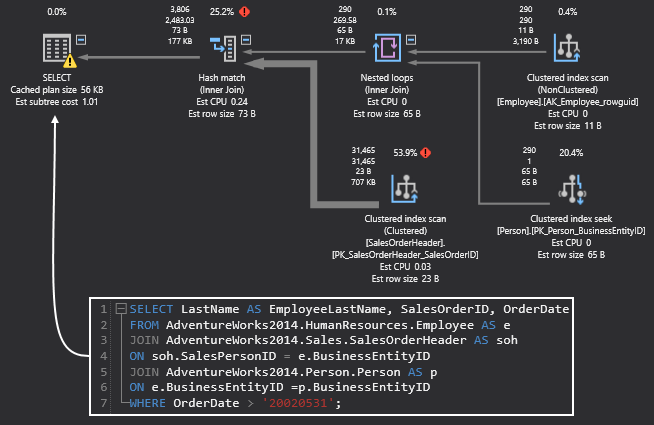
Understanding Query Execution Plans: Unveiling the Magic Behind Database Performance
In the world of databases, where data is king, efficient and lightning-fast access to information is crucial. Whether you're managing a small-scale application or a massive enterprise system, optimizing your database queries can make a world of difference in performance. This is where the concept of "Query Execution Plans" comes into play. In this blog post, we'll take a deep dive into what query execution plans are, why they matter, and how they can help you fine-tune your database performance.
What is a Query Execution Plan?
At its core, a query execution plan is a blueprint that a database management system (DBMS) creates to execute a given SQL query. When you send a query to your database, the DBMS must decide how to efficiently retrieve the required data. It's like a GPS map guiding you through the quickest route to your destination, except in the world of databases.
The DBMS analyzes the query, considers various factors such as indexes, table sizes, and relationships, and devises a step-by-step plan to retrieve the data. This plan outlines the sequence of operations the DBMS will perform, like accessing tables, applying filters, joining data, and utilizing indexes. The more complex the query, the more intricate the execution plan.
Why Do Query Execution Plans Matter?
Efficient query execution plans can significantly impact the performance of your database-driven application. Here's why they matter:
-
Performance Optimization: A well-optimized query execution plan can dramatically reduce query execution times. This translates to quicker response times for your application, resulting in a better user experience.
-
Resource Management: By understanding how your queries are executed, you can identify potential resource bottlenecks and optimize resource allocation, avoiding unnecessary strain on your database server.
-
Scalability: As your application grows, ensuring that your queries run efficiently becomes even more critical. A solid understanding of query execution plans enables you to scale your system without sacrificing performance.
-
Troubleshooting: When queries suddenly slow down or behave unexpectedly, examining the execution plan can provide insights into why this is happening. It can reveal missing indexes, poorly designed queries, or other issues that need addressing.
Decoding a Query Execution Plan
A typical query execution plan consists of several key components:
-
Operations: These are the fundamental actions the DBMS will perform, such as scanning a table, applying a filter, or performing a join.
-
Access Methods: These methods determine how the DBMS will access the data. Common access methods include table scans, index scans, and index seeks.
-
Cost Estimates: Each operation in the plan comes with a cost estimate. This estimate reflects the resources (CPU, memory, I/O) the operation is expected to consume.
-
Join Algorithms: If your query involves joining multiple tables, the execution plan will specify the algorithm used to perform the join, such as nested loop, hash join, or merge join.
Obtaining and Analyzing Execution Plans
Most modern DBMSs offer tools to view and analyze query execution plans. In SQL Server, you can use the EXPLAIN keyword, while in PostgreSQL, the EXPLAIN command provides insights into how your query will be executed. These plans can help you identify areas for optimization, such as missing indexes or redundant operations.
Conclusion
Query execution plans are the backbone of efficient database performance. By understanding how your queries are executed, you gain the power to optimize performance, troubleshoot issues, and ensure the scalability of your application. Taking the time to delve into the intricacies of execution plans can save you time, resources, and headaches in the long run, making your database-driven applications truly shine in the eyes of your users.
Chung Nguyen
